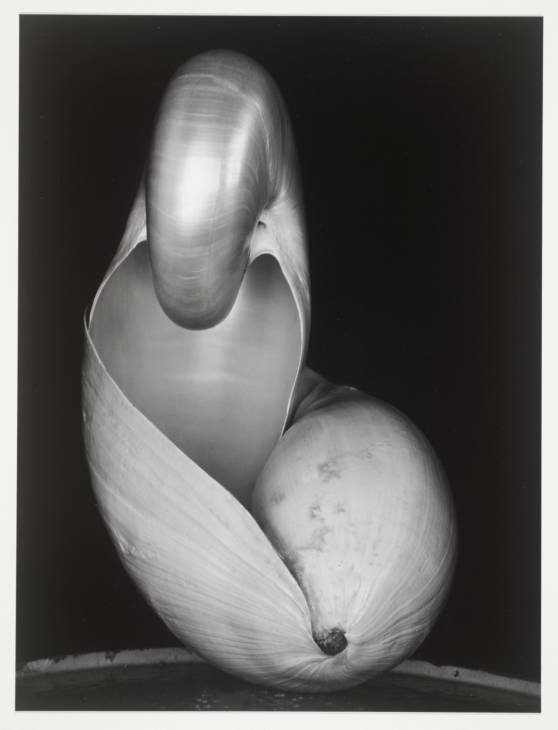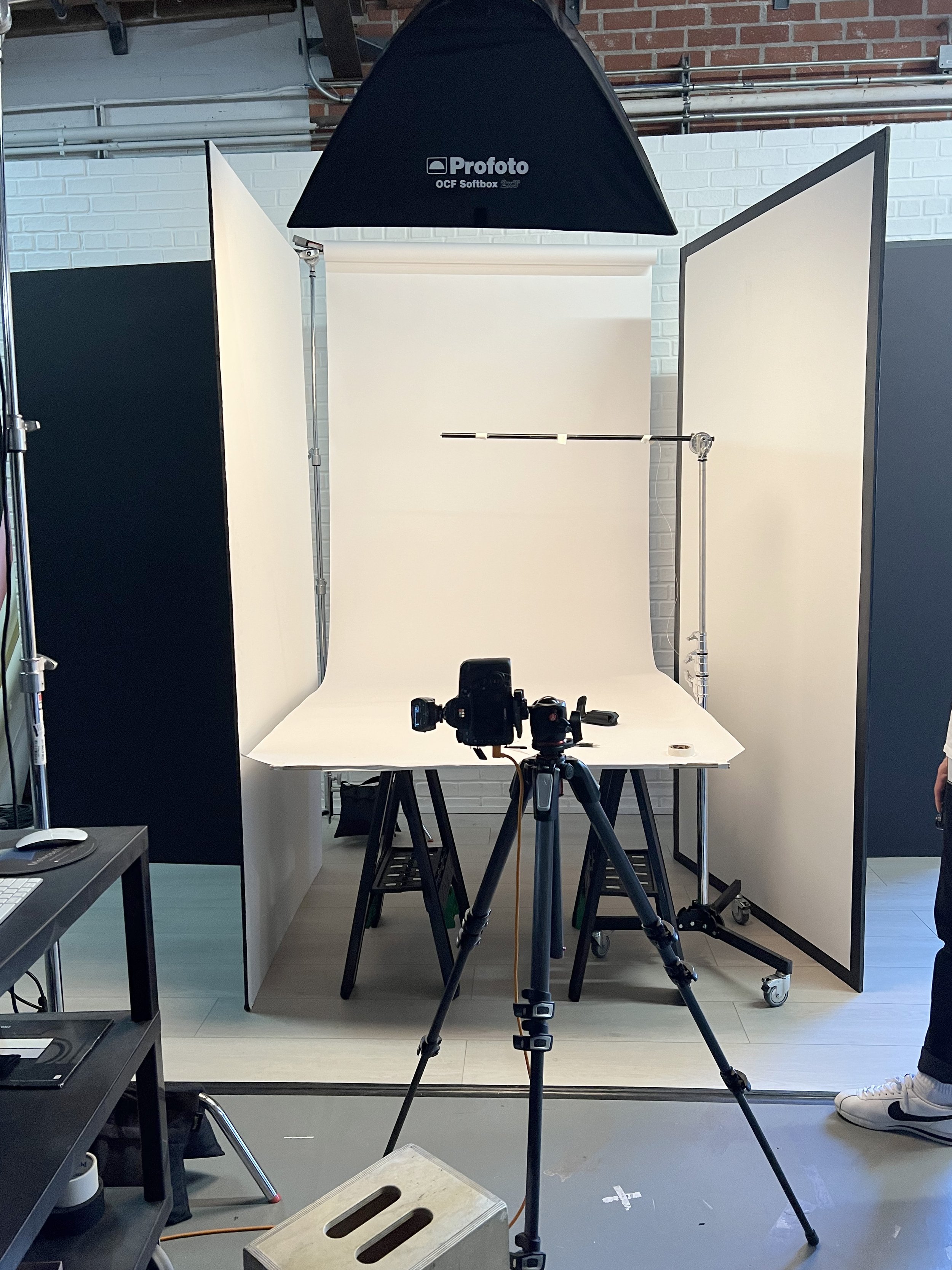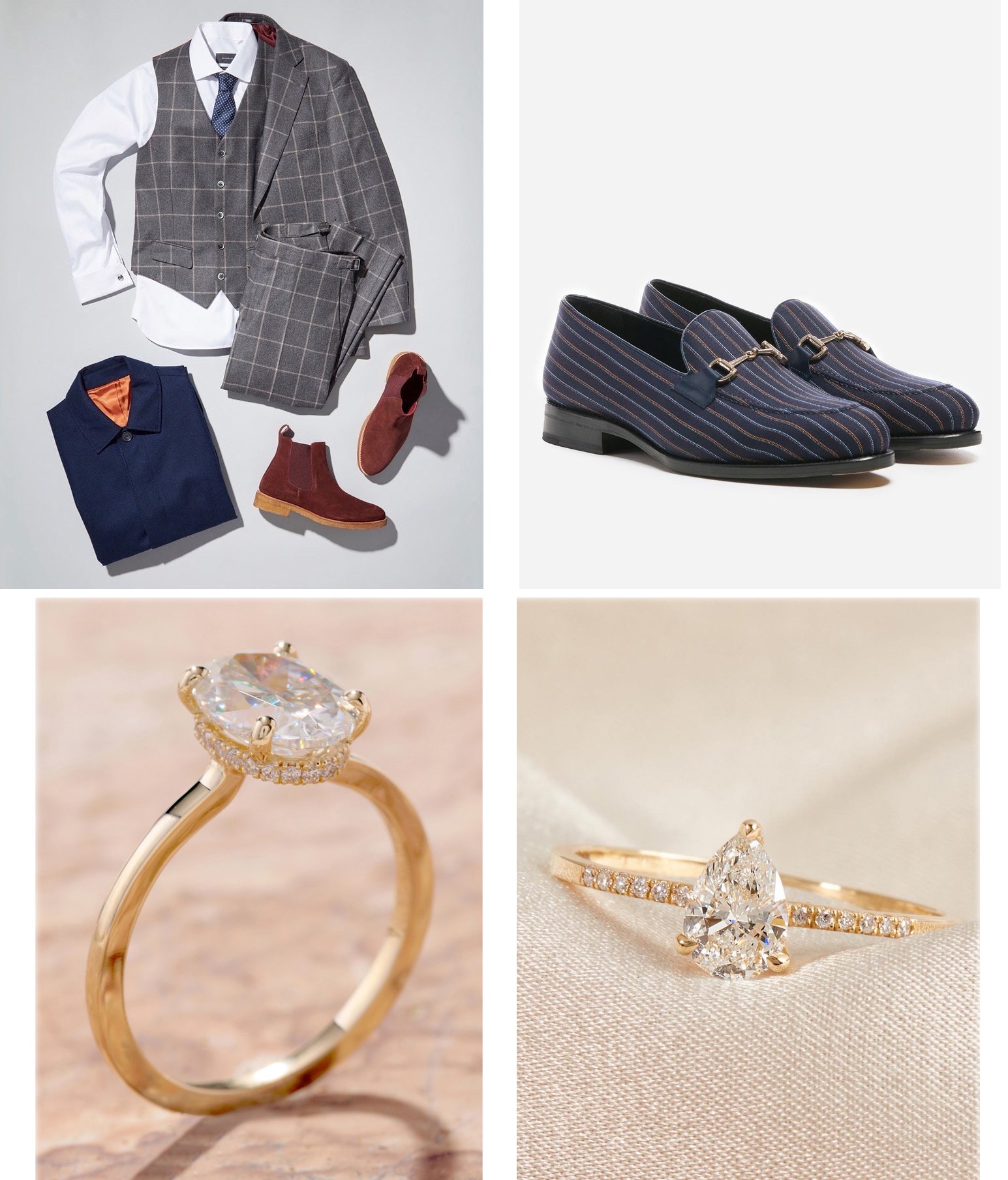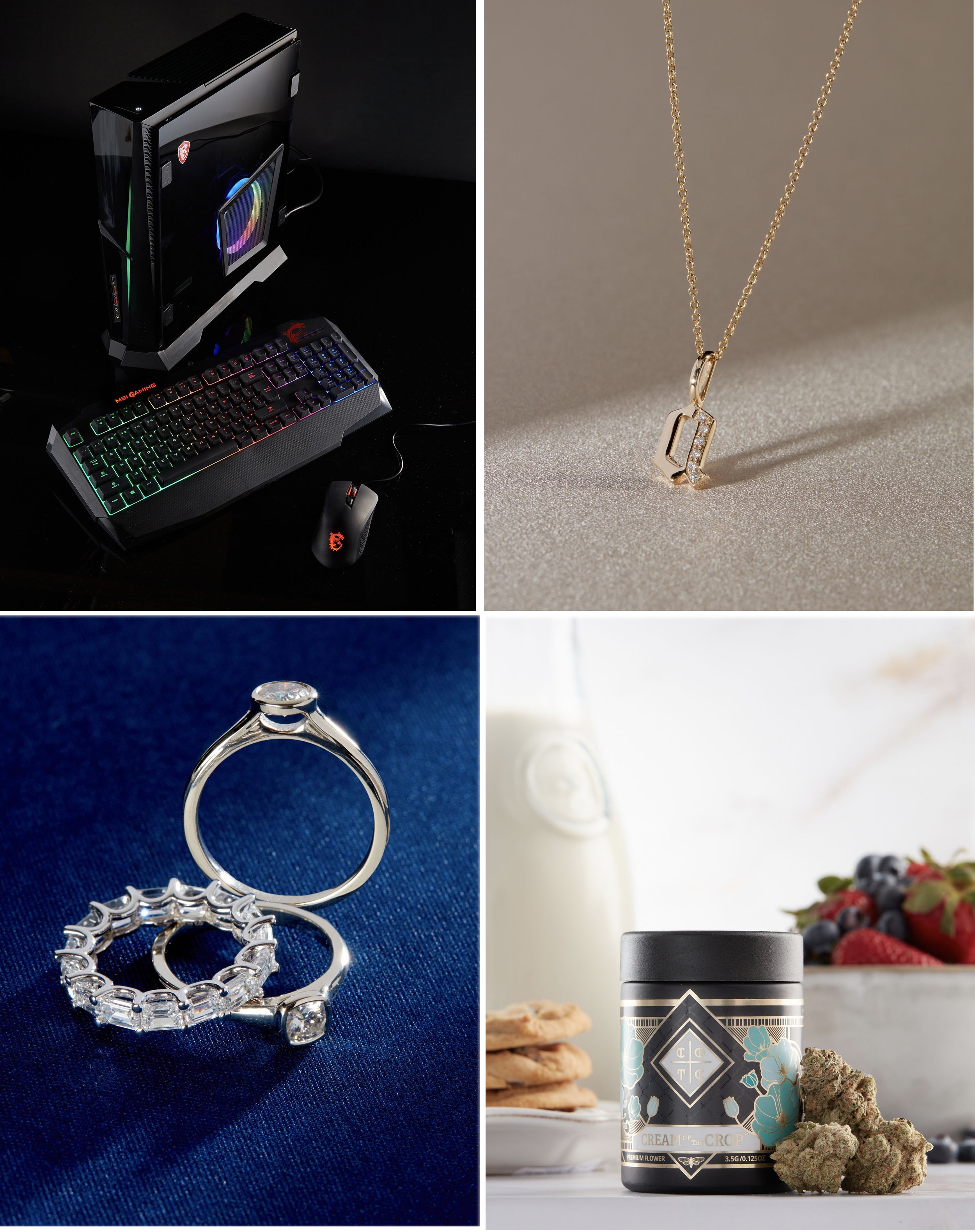Creative still life photography refers to the arrangement and photography of objects that have been placed in a visually pleasing composition. For commercial photographers, this type of work is called product photography, as it is done to sell products. The photographer may choose to work alone, but more often partners with a stylist, who creates these compositions through careful arrangement and selection of props. The stylist is responsible for preparing the products for photography and displaying them in the best way to show off their features. This allows the photographer to focus on the technical aspects of product photography, such as camera settings, lens selection, software adjustments, and most importantly, lighting.
Creative still life photography often uses unusual angles and lighting to compose the images so that they have maximum visual impact. Commercial photographers may choose to specialize in product photography, while others may offer it in addition to other services, such as fashion photography.
In this blog, we will cover creative still life photography intended for advertising, social media, or splash pages and banners for websites, as well as product photography for e-commerce.
The History of Still Life Photography
Still life paintings are the genesis of still life photography. Photographers typically have an art degree, and their early university education includes a variety of 2-D and 3-D design classes, as well as life drawing (human form) and sculpture. This multi-media approach is designed to develop the artistic eye of the budding photographer. All art relies on the same fundamentals – color theory, composition, perspective, form, and technique. Learning the visual language is step one in mastering photography.
In the early 1800s, still life photography was used as a means of teaching anatomy to medical students. Still life photography was also utilized to teach perspective to art students. Perspective, when describing art, means the way that the artist depicts how things actually are in space, through the use of geometry, scale, and atmosphere. A photograph creates a two dimensional depiction of a three dimensional world, so many painters start with a still life photograph as a reference.
In the late 1800s and early 1900s, still life photography began to be used as an art form in its own right. One of the most famous early practitioners of this style was Edward Weston. He is best known perhaps for his landscapes, but as a pioneer of still life photography, he photographed flowers and other plants, as well as fruit, glassware, shells, and other objects.
Edward Weston, “Shell” 1927
Although this blog focuses on commercial photography, all photographers benefit by studying the work of their predecessors, and practicing the craft as an artistic pursuit. Freed from the confines of commercial photography, the photographer can develop their personal style, explore various techniques and lighting setups, and fuel their own creativity and passion.
Techniques for Creative Still Life and Product Photography
Now that we have explored the history, let’s talk about the different kinds of still life photography that are typical in today’s commercial photography world. We will also delve into the tools and techniques that product photographers use to create their still life photographs.
1. The setup
Still life photography can mean a variety of things. While it typically refers to objects shot on a tabletop, it can also include room scenes and environmental setups. Room scenes are used to display furniture and home decor.
Environmental setups refer to any object placed in an area that depicts a genuine place. Environmental photography may be shot in a real location, or they can be built in a studio to mimic a room, outdoor area, kitchen or bathroom counter, and so-on. Setting up in the studio allows the photographer full control over the lighting and other technical aspects.
Boho Room Scene, studio setup depicting artificial window light and heavy propping.
©Sonya Bowman Photography
Environmental photography shot in a real life location is sometimes preferred for social media usage as it tends to feel more natural. Often, when product photography is shot on location, the photographer will rely on natural light coming in through a window. Occasionally, available light, such as that provided by existing lamps and other light fixtures will be used by starting photographers.
It should be noted that the colors expressed by those lights will be visible in the photograph, even if our eyes cannot perceive the differences. For instance, if you are in a home or apartment, and there is florescent light coming in from the kitchen, it will cast green light. The lamp beside the sofa, however, will cast orange light. Professional photographers avoid using available light in all circumstances aside from architectural photography.
Window light, however, is one of the most beautiful types of lighting, providing a soft, directional, color neutral lighting that feels inviting.
Boho room scene shot on location with natural window light. ©Sonya Bowman Photography
While creative still life photography can mean a variety of things, product photography is usually referring to objects shot on a tabletop. Some photographers have a a selection of surfaces to use, such as antique tables, distressed pieces of wood, various marble slabs, and so on. The best studios will have a variety of surfaces to choose from to lend atmosphere and depict a mood.
The standard basic, however, is a simple 4x4 foot piece of 1/2 inch plywood supported by a pair of sawhorses. These items can be purchased at your local hardware store for under $100 dollars. The plywood is not the surface the photographer shoots on, but is instead used in combination with a c-stand and a 53 inch x 18 foot roll of seamless paper. A sweep, or soft curve, is created with the paper along the back edge, which allows for the endless horizon look that is standard in e-commerce photography.
Standard product photography studio setup.
©Sonya Bowman Photography
For jewelry photography, photographers may use that basic plywood setup to place marble slabs, fabric cuttings, art papers, or a combination thereof. Not having a paper sweep in the back allows the photographer to place a light behind the jewelry, which allows for the more directional type of lighting that is sought after in today’s creative still life photography aesthetic.
Examples of surfaces used on top of the standard product photography studio setup with directional lighting.
©Sonya Bowman Photography
2. The lighting
For a long time, softboxes were the standard in still life photography, and remain the standard for e-commerce photography. E-commerce product photographers light in such a way that the background can be removed altogether. “Clipping” is a technique used by retouchers to remove the item from its native environment, and place it on a clean white (or other) background. Using softboxes provides a neutral, shadowless lighting style that looks harmonious on the artificially created background.
In creative still life photography, however, directional lighting is typically the preferred approach. Directional lighting, as its name implies, gives the viewer an idea of where the light is coming from. If the shadow lands in front of the object, the light is behind the object. If the shadow is off to the side, the light is on the other side. Directional lighting feels most like sunlight, and allows for the textures and details of a product to really shine, as opposed to the softbox technique that tends to diminish details. (Not always a bad thing, many products look best when lit with a softbox).
Examples of directional and soft lighting.
All images © Sonya Bowman Photography
To achieve a hard shadow, the photographer uses a light with a bare bulb (no light modifier) or a reflector (the standard silver bowl attachment that comes with most studio lights). Often a hard light is used in combination with fill cards or a second light outfitted with a softbox to fill in the shadows and decrease the drama that is an integral part of directional lighting. Product photographers must balance the visual appeal of a composition while displaying the product in such a way that the customer can understand the features and details of said product.
Creative still life photographers may light their products is by creating a natural window light effect in studio. To get this type of lighting, a white wall or bank of V-flats are used to bounce light against. The lighting remains directional, yet it is softer than the bare bulb technique, and is a flattering approach on a variety of items.
(Note: a V-flat is a pair of 4x8 foot white cards, usually foam core or gator board, taped together on the long edge to create an area of 8x8 feet. V-flats stand on their own due to the V shape, eliminating the need for additional C-stands. See example in standard product photography studio setup, above.
Examples of simulated window light in studio (home goods) and natural window light (kid’s clothes)
All images © Sonya Bowman Photography
Finally we have the technical lighting approach. This look relies on the light heads being outfitted with either grids, spotlights, or strip softboxes to highlight a single edge of the item or area in the composition. This type of lighting is, unsurprisingly, often used when photographing tech items, such as computers, phones, and so on, but may also be used by advertising and jewelry photographers. Sometimes gels are applied to the lights to create dimension and color. Since this type of lighting is master level, we will address it in a separate blog at a later date.
Examples of technical lighting.
All images © Sonya Bowman Photography
3. The lens
As noted earlier, product photography can include a great variety of objects from something as small as a piece of jewelry up to a sofa or table and chairs. For those larger items, the go-to lens is a Canon 24-105mm zoom lens, or something equivalent. 24mm is a wide setting, and may result in distortion of the room or objects at the edges, so it is best to keep the lens at a 50mm or above when possible.
For jewelry photography and other small items, as well as close-up details such as fabric swatches, the best lens to use is a 100mm macro lens. This lens allows the photographer to get very close to the object. The macro setting simply means the lens is capable of focusing up-close. The longer the lens, the more pieces of glass are involved. Those additional layers mean more light is required, so a jewelry photographer will absolutely need good studio lights to create the detail and depth of field that is needed to photograph jewelry and other small items effectively.
(See jewelry examples above)
4. The props
For e-commerce photography, the photographer will seldom use props. Sometimes it is necessary, such as when you are trying to illustrate the purpose of a product. A money clip may be propped with some crisp bills. A phone case may get propped with a phone. A vase may be propped with flowers. In general, these propped shots are the alternate views, because when it comes to product photography, the goal is to display for the customer the item that they will receive once they make a purchase. The description may clearly point out that this is a phone case. However, if the only pictures provided are propped with a phone, there will inevitably be some customers who will expect it to come with the phone. A product photographer’s job is to describe with pictures everything there is to know about a product and what the customer can expect to receive.
Note how the addition of the phone as a prop illustrates scale and demonstrates function.
©Sonya Bowman Photography
For creative still life photography, however, the props are an integral part of creating the environment that evokes a lifestyle that the brand wishes to project. For packaging and advertisements, the photographer will depict an environment and propping that illustrates the place and way the product will be used. Kitchen items will show food, a picture frame will have a photograph .
For jewelry photography, a stylist may opt to place some crystals in the background, soft and out of focus, to create an elevated and feminine look. For cosmetics and skin care, flowers might be the best prop. When shooting kitchenware and other household items, the stylist may opt for fruit and vegetables, bottles of wine, linens, baskets, glassware, porcelain, and pottery. The props must be carefully chosen and placed in such a way as to enhance the photograph without detracting from product itself.
Examples of propping
All images © Sonya Bowman Photography
Los Angeles Product Photographers
Los Angeles is home to many product and creative still life photographers. In a large city like Los Angeles, photographers have easy access to all of the things that they need to capture beautiful, eye-catching still life photographs.
Los Angeles is home to Samy’s Camera, which is where many photographers source everything from cameras and lenses, lights and modifiers, seamless paper and gaffer’s tape. Samy’s Camera has many locations around Los Angeles, and photographers can rely on them to have all of the photography essentials.
For props, Los Angeles has everything a product photographer could need. There are marble slab companies that photographers can purchase to use as backgrounds. Mood Fabrics has a location in Los Angeles, and photographers can source an endless variety of fabrics and textiles to be used as backgrounds in creative still life photography. Mood also has ribbons and other notions that stylists might use as props in the photograph.
The flower district in downtown Los Angeles has cut flowers in every variety and color that can be used as props in product photography. There are even large household plants that can be used in room scene photography, as well as vases, ceramics, and pottery that are helpful when creating environmental photography.
Los Angeles is a well known fashion hub. When creating room scene and environmental photography, there may be a need for shoes by the door or a jacket on a wall hook to help the set look more natural and believable. Whatever the prop, Los Angeles has everything a photographer could need to help their photography look the best.
Note how the addition of props displays use of products and brings to life an otherwise dull environment.
©SonyaBowmanPhotography
For photographers on a budget, EcoSet in on the east side of Los Angeles is a treasure trove. EcoSet provides services to larger productions that want to reduce their environmental impact by sending fewer things to the landfill. What EcoSet does is to provide dumpster services, separating the trash from the reusable items. They house those items in a giant warehouse and make them available free of charge to photographers and filmmakers who are working on a budget. EcoSet has a lot of set pieces from television productions and commercials. They also have flooring, home furnishings and other props, although their stock is always changing depending on what is available. Photographers never know what they will find when they visit EcoSet.
The most important asset for photographers in Los Angeles, however, is the people. Photographers do not work alone, they collaborate with art directors, stylists, production assistants, and retouchers to create the creative still life photography that they are hired to do. Los Angeles is home to a giant pool of talented, professional, and creative individuals who work together as a team to produce the best still life photography available.
I hope you’ve enjoyed this blog about creative still life and product photography. If you would like to see more examples of still life and product photography, please visit my website Sonya Bowman Photography.











